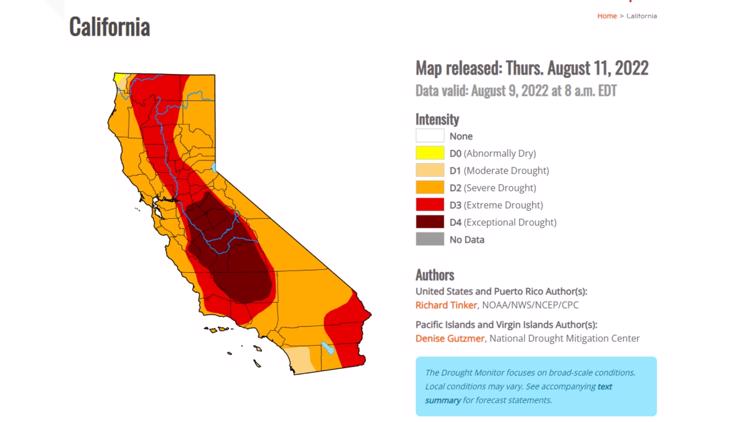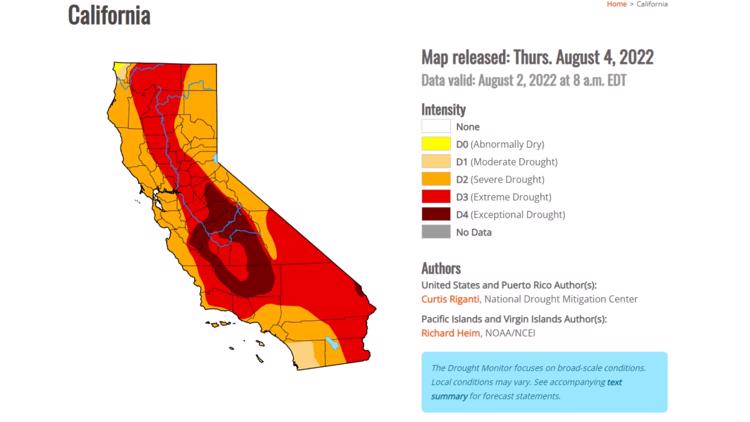SACRAMENTO, Calif. — The latest drought outlook, released Thursday, shows the state slipping further into drought.
The update revealed that drought conditions in some regions of the state actually improved. Portions of the southern Sierra and the Mojave desert had their status dropped from extreme drought to severe drought due to an above-average monsoon season that has dropped record rain in places like Death Valley.
Meanwhile, the majority of the San Joaquin Valley is classified as D4, or extreme drought, the highest level.
California's Mediterranean climate results in most of the state receiving little to no rain in the summer months. The state relies on its winter snowpack to supply its citizens, businesses and agriculture industry with enough water to survive the summer.
The Aug. 11 update to the drought monitor, compared with the previous weeks update, displays the highest level of drought expanding from 12% to 16.5%.
Drought Monitor
With nearly all of the state mired in some stage drought, state officials and water districts are monitoring the situation closely and planning for the future. The last three years have put additional strain on some water agencies, according to Constance Anderson, spokesperson for Turlock Irrigation District.
"2021-2022 water year is our third consecutive dry year... and though this year has been wetter for our watershed than the previous two, because it is the third year of a drought, those compounding effects have led to this three-year period as being the driest three-year period on record," Anderson said, regarding drought impacts to TID.
RELATED: Sacramento Weather Forecast
TID collects water from the Tuolumne River watershed, which includes Don Pedro Reservoir and Turlock Lake. They supply 150,000 acres of farmland with irrigation water and 662 square miles of electric power production, one of only four irrigation districts in the state that supplies both.
Anderson said the watershed has received 24 inches of precipitation this water year, equating to 66% of average. Current projections show Don Pedro reaching an elevation of 714 feet by the end of summer, slightly below the minimum level last year.
"Multi-year droughts like this, that we're currently currently experiencing, it minimizes the amount of irrigation water that we can provide to our grower customers every year, and the TID board has actually taken proactive steps in each of the last three years to reduce the amount of available water to growers, knowing that these dry years don't exist in a vacuum - that there's they're not just going to be one dry year, there are likely to be many dry years in succession." Anderson said.
Another challenge facing the district is the changing climate, more specifically year-to-year variability in precipitation.
"We don't know when we're going to have a better than average water year, but what we do know is that the extremes continue to get more extreme. So when we have dry years, they're going to be drier and they're going to be dry longer," Anderson said.
WATCH ALSO:























